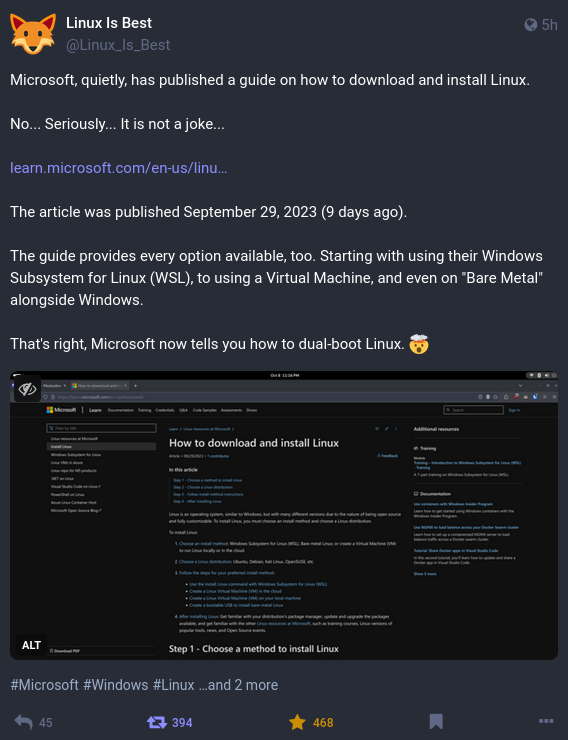this post was submitted on 09 Oct 2023
1835 points (98.2% liked)
Linux
48331 readers
1207 users here now
From Wikipedia, the free encyclopedia
Linux is a family of open source Unix-like operating systems based on the Linux kernel, an operating system kernel first released on September 17, 1991 by Linus Torvalds. Linux is typically packaged in a Linux distribution (or distro for short).
Distributions include the Linux kernel and supporting system software and libraries, many of which are provided by the GNU Project. Many Linux distributions use the word "Linux" in their name, but the Free Software Foundation uses the name GNU/Linux to emphasize the importance of GNU software, causing some controversy.
Rules
- Posts must be relevant to operating systems running the Linux kernel. GNU/Linux or otherwise.
- No misinformation
- No NSFW content
- No hate speech, bigotry, etc
Related Communities
Community icon by Alpár-Etele Méder, licensed under CC BY 3.0
founded 5 years ago
MODERATORS
you are viewing a single comment's thread
view the rest of the comments
view the rest of the comments

Just in case a Windows user sees this, install WingetUI and your update flow will be fixed.
Of course the problem is that wingetui isn't there by default, isn't integrated to Windows Update, no matter what, WinGetUI basically becomes yet another tray icon, alongside a half dozen other auto-updater tray icons that various vendors added since there's no integrated facility to rely upon.
So sure, it's a bandaid on winget, but it's still awkward and the ecosystem is a mess. Compared to Linux where a distribution will have, in the box, an extensible central update facility maybe serving two different types of repositories (e.g. apt and snap, or dnf and flatpak).